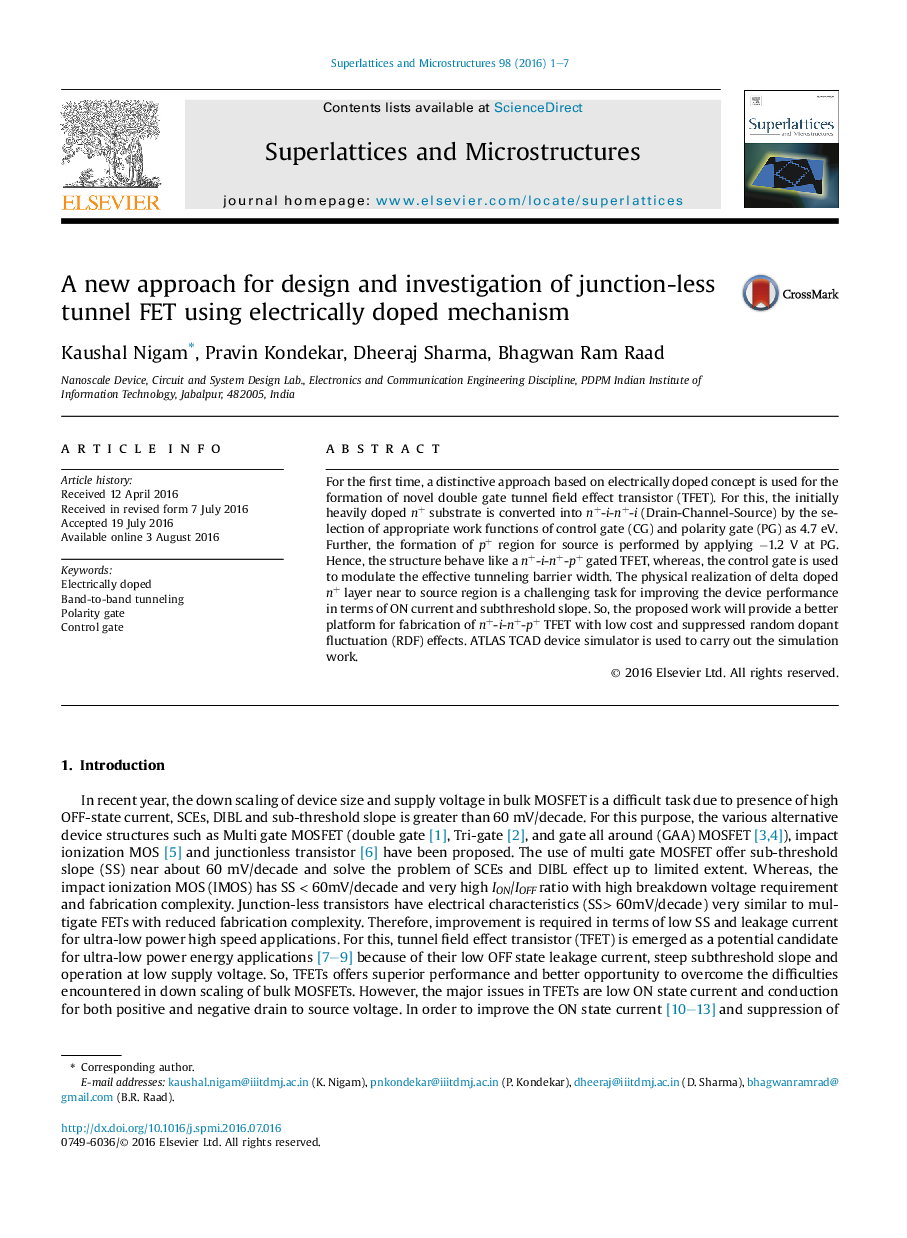| Article ID | Journal | Published Year | Pages | File Type |
|---|---|---|---|---|
| 1552444 | Superlattices and Microstructures | 2016 | 7 Pages |
Abstract
For the first time, a distinctive approach based on electrically doped concept is used for the formation of novel double gate tunnel field effect transistor (TFET). For this, the initially heavily doped n+ substrate is converted into n+-i-n+-i (Drain-Channel-Source) by the selection of appropriate work functions of control gate (CG) and polarity gate (PG) as 4.7Â eV. Further, the formation of p+ region for source is performed by applying â1.2Â V at PG. Hence, the structure behave like a n+-i-n+-p+ gated TFET, whereas, the control gate is used to modulate the effective tunneling barrier width. The physical realization of delta doped n+ layer near to source region is a challenging task for improving the device performance in terms of ON current and subthreshold slope. So, the proposed work will provide a better platform for fabrication of n+-i-n+-p+ TFET with low cost and suppressed random dopant fluctuation (RDF) effects. ATLAS TCAD device simulator is used to carry out the simulation work.
Keywords
Related Topics
Physical Sciences and Engineering
Materials Science
Electronic, Optical and Magnetic Materials
Authors
Kaushal Nigam, Pravin Kondekar, Dheeraj Sharma, Bhagwan Ram Raad,
